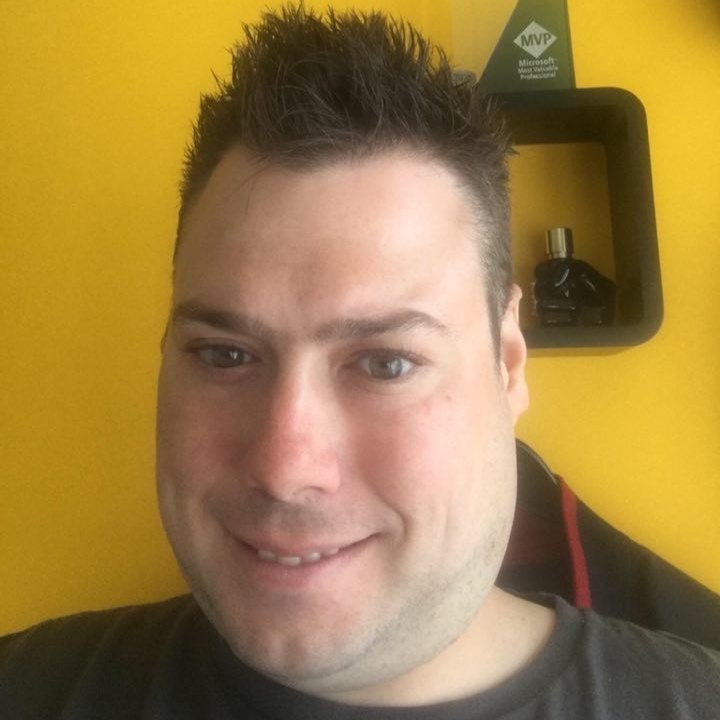Interview with Dennie Declercq

Every week, we meet with audience members with disabilities who are willing to come forward and share a little bit about their own personal journey and experiences, attending live, in-person, or virtual speaking or training events. Through their unique and generous perspectives, speakers, trainers, facilitators, and other communication professionals can hopefully learn about some of the things that they do well, but also (and maybe more importantly) about some of the things they could improve to provide an experience that is truly inclusive of everyone.
Meet Dennie, an audience member who has autism, low vision, and PTSD
So without further ado, let’s dive right into this week’s interview with Dennie Declercq (he/him). Dennie has autism, low vision, and PTSD. He comes to us from Gistel, Belgium.
Introductions
QUESTION 01 Can you tell us a bit about yourself, and how your disability might impact your experience, as someone who attends live in-person and virtual events?
I am Dennie Declercq, Microsoft MVP and a person on the autism spectrum, and identify myself as a person with autism (person first language). In addition to this, my sight is not good, but I am not blind and with contact lenses, I can help myself. Although there are times when other speakers present their slide deck that the font is way too small for me, but it seems that the slides work for everyone else.
Also, my mental health, especially anxiety, raised very high during times of the pandemic. Crazy enough, I wasn’t that afraid to catch Covid and die, but I was/am afraid to be in isolation, to be locked up for some time. This is directly related to my PTSD (that I also have) for an experience when I was 13 (undiagnosed).
Things that ruin the experience
QUESTION 02 Thinking back on some of your experiences attending in-person or virtual events, what are some of the worst things speakers, trainers, and other communication experts can do to ruin your experience as an attendee?
First of all, this is a nice question! Thanks for asking. I give you my top 3:
- Too small font type
- Bad color contrast
- Too many assumptions (some talks increase anxiety)
Things that make a positive impact
QUESTION 03 Can you share some of the great things speakers, trainers, and other communication experts sometimes do that make a positive impact on your ability to fully enjoy your in-person or virtual event experiences?
For virtual conferences it’s engaging, extending the conversation with tools like Slido. I also love if they are telling a personal authentic story in addition to the tech-related stuff. For in-person conferences, I also like the authentic and personal touch. For interaction then, I love it if they are engaging with the audience with a “raise your hands, if…” game.
Sharing a piece of advice
QUESTION 04 If you had one piece of advice to give speakers, trainers, and other communication experts, so their content became more inclusive of people who have disabilities, what would it be?
My top 5 suggestions would be:
- Be conscious about color usage,
- Be conscious about font-size,
- Be authentic,
- Engage with your audience,
- Be aware for own assumptions because there is danger of ableism.
Wrapping up
QUESTION 05 Thank you for sharing some of your insights with us today. As we wrap up our conversation, is there anything that you’d like to add, such as another thought, another piece of advice, another perspective, etc.?
I LOVE research into inclusion and (dis) abilities on all fields on living. I love that you do this at the moment for public speaking!
Connect with our guest on social
Interested in knowing more about our guest this week? You can follow Dennie on LinkedIn and Twitter.

About Denis Boudreau
Denis Boudreau is a consultant, trainer, and speaker specializing in digital accessibility and disability inclusion. He works with organizational leaders who want to equip their teams with the skills to create accessible websites and digital products – so no one is left behind. A Certified Professional in Web Accessibility (CPWA), Denis has trained thousands of web professionals over the past 20+ years and delivered hundreds of workshops in both English and French. He has helped leading brands like Netflix, Salesforce, and Victoria’s Secret embed accessibility into their digital strategies, empowering them to meet legal obligations, improve user experience, and connect with more people, more effectively.
